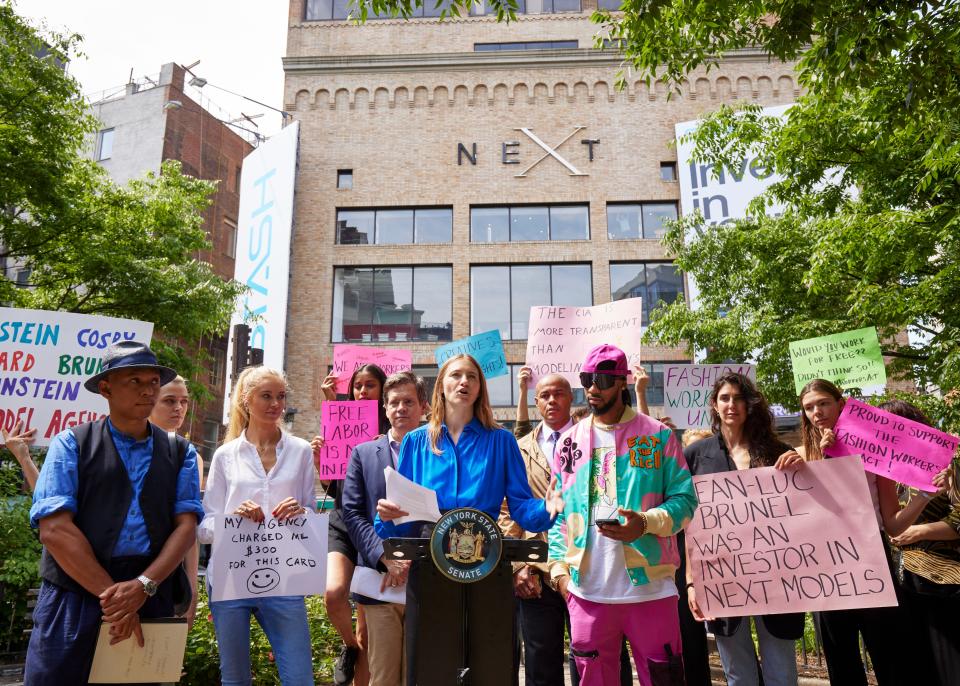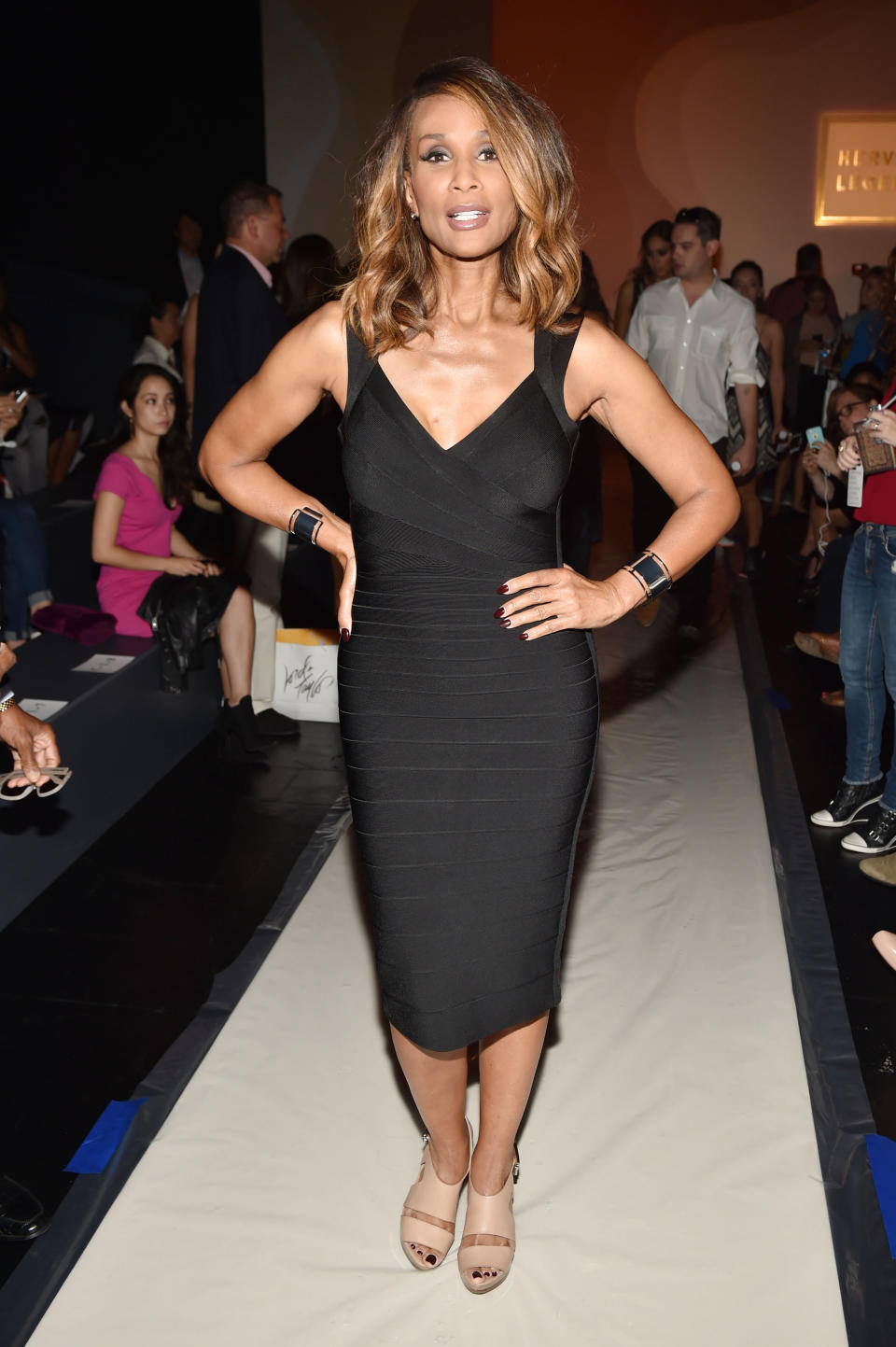After three years of lobbying from models and politicians, the Fashion Workers Act has been passed by the New York Assembly and Senate and is headed to Gov. Kathy Hochul’s desk.


The unprecedented legislation is aimed at regulating management agencies and providing oversight in the industry. It aims to ensure that workers receive contracts, payment within 45 days and are protected from harassment, discrimination and unsafe working conditions. Pending Hochul’s approval, the legislation would ensure that agencies would have fiduciary responsibility for models, industry hairdressers, content creators, make up artists and other creative people. It is also designed to prohibit any unreasonably high commissions and fees. Supporters have said it would curb predatory behavior by New York management agencies that operate without oversight in the $2.5 trillion fashion industry.
More from WWD
Last month, one of the bill’s most ardent proponents, the Model Alliance, staged a rally on the steps of the Metropolitan Museum of Art the day before the Met Gala to draw attention to it.
The fashion industry is an economic engine in New York state and the biannual New York Fashion Week generates approximately $600 million in revenue each year. About 180,000 people work in the New York fashion industry, accounting for nearly $11 billion in total wages.


There is another bill aimed at the industry that was awaiting approval among legislators on Friday afternoon Albany called The Fashion Act, which would amend the general business law and require fashion sellers to be accountable for environmental and social standards. It would also amend the state’s financial law regarding the establishment of a fashion reform fund. New York state Senator Brad Hoylman-Sigal advanced both bills. Assemblymember Karines Reyes, RN, who chairs its subcommittee on workplace safety, supported the Fashion Workers Act for labor.
In addition, the New York State Senate passed the Retail Worker Safety Act on Friday, which would require corporate retail employers to adopt a violence prevention plan and train workers in de-escalation of active shooters. It would also mandate that large employers must install panic buttons throughout the workplace.
While the Fashion Act would help promote sustainable efforts, basic protections for models – including those who are teenagers and immigrants – would come from establishing a zero-tolerance policy for abuse within the industry.
There were 3,090 models in the US earning hourly wages between $15.23 and $67.46 as of May 2023, the most recent data provided by the US Bureau of Labor Statistics. However, established models earn much more for runway appearances and major designer advertising campaigns. New York and California are the states with the highest number of models nationally, followed by Ohio, Virginia and Florida.
Urging Gov. Hoping to sign the legislation into law immediately, Model Alliance founder Sara Ziff said Friday in a statement, “This is a huge step forward for the fashion industry, which has been a total worker rights issue since its inception. , camouflaged with glamor and filled with a range of abuses that are considered the price of admission.”
As a result of the #MeToo movement and even more recently, Ziff and several high-profile models like Carrie Otis have spoken publicly, and in some cases taken legal action, about the alleged sexual abuse they faced in their earlier modeling days. . Model Coco Rocha also supported the proposed legislation.
“thrilled” with the bill’s passage and calling on Hochul to take swift action to protect the next generation, Model Alliance board member Otis said, “I know firsthand how models are forced — girls often very young — to be normalized financially and sexually. exploitation. This should not be normal. And now, it won’t.”
Former model and activist Bethann Hardison said Friday that the question is what the legislation will mean for the agencies that represent the fashion models. It will require adjustment and delivery according to the law, she said.
Having owned an agency from 1984 to 1997, Hardison, who continues to represent Tyson Beckford, said her agency was run like a tight ship during the modeling industry’s “wild, wild west.” “I couldn’t afford to mess up being a beautiful woman, and a caring person wouldn’t allow it, and I never wanted to have a modeling agency. I was the right person at the right time doing the right thing,” she said.
“The modeling industry has come around the crime, a lot has gone away and the dust has settled. What is left behind will obey the law, like it or not. It shouldn’t be necessary to come to this, but the thing is, we hope it will benefit the fashion models to the model agencies. I’m still proud to be an alumni, but it’s hard to swallow the thought of being controlled,” she said.


Another well-known model, Beverly Johnson, who was the first Black model to land the cover of American Vogue 50 years ago, gave her support and emphasized the need for more diversity. She said, “After many years in the fashion industry, the challenges of underrepresentation and inequality for Black models continue to persist, and it is extremely difficult for Black survivors to speak out about abuse and to believe.”
With the legislation one step closer to becoming law, representatives of some of the modeling agencies were relatively quiet about the prospect on Friday afternoon. Staff at IMG Models and Lions Talent Management Company did not immediately respond to requests for comment. Karine Roman, vice president at New York Models and LA Models, declined to comment.
The best of WWD